History and Herritage

A need for new type of fundamental engineers to work in the new sectors of aviation science and technology arose in Russia in the early 20th century. An outstanding Russian scientist the founder of aerodynamics Professor Nikolai Zhukovsky initiated the foundation of scientific and educational centres to conduct the necessary research and training of scientists and engineers for the industry’s development. Under the patronage of his follower, an outstanding scientist and teacher Boris Yuriev, Aeromechanical Department was founded at the mechanical faculty of MVTU (Moscow Higher Technical School). It was converted into Aeromechanical Faculty in 1929.

On the 20th of March 1930, it was decided to split MVTU into five specialised engineering schools, Higher Aeromechanical School (VAMU) being one of them. In the spring of 1930, the first cohort of students was enrolled in the school. The number of students at this period was about 450. The classes were held in two and even three shifts.
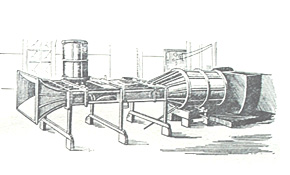
In the autumn of 1930, the institute was given the building of a former gymnasium on the 5th Tverskaya-Yamskaya street. In September 1930, the institute had 850 students. Employees of TSAGI (Central Aero-hydrodynamics Institute) and MVTU formed the basis of the teaching staff of the institute. Further formation of modern material and technical base of the institute contributed to the rapid progress of all institute’s activities in the latter half of the 30’s.
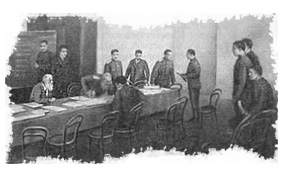
The structure of the institute was continuously improving to meet the aviation industry’s new requirements. Widespread deployment of the aviation industry those years created demand for specialists in planning and manufacturing process management.
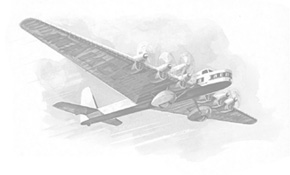
By 1940, MAI evolved as a leading scientific and educational centre specialised in training of broad specialists in aviation science and industry. MAI consisted of 5 faculties, 38 departments, 22 laboratories, 24 classrooms, training workshops and a flight training unit at that time. Apart from the education of specialists and scientists, MAI carried out researches and a number of design developments at the same time that left a noticeable trace in the history of world aviation.

During the World War II(1939-1945) a large group of MAI teachers and staff volunteered to go to the battlefield, many employees of the institute were seconded to the aviation industry enterprises. During wartime, educational and scientific activities were transferred to Alma-Ata.
Postwar period of MAI’s development is associated with revolutionary changes in aviation technology. In accordance with the new requirements, a number of new departments and faculties was established in the institute. In 1946 the Faculty of Radio Engineering was launched. A number of departments for various types of missile design and construction was established in the early 50’s. This stage resulted in the transformation of the institute which was previously focused mainly on aircraft and helicopters into Aviation Polytechnic Institute, providing training for a wide range of scientific and engineering organizations in aviation and aerospace industry.
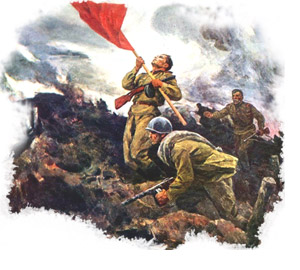
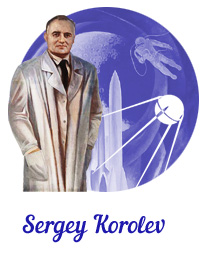
In 1959, the Department of Aircraft Design and Construction was established (since 1993 it is called Space Systems and Missile Engineering) based on the training of specialists in the field of missile and space technology. From the establishment and until 1990, the Department was headed by the first Deputy Chief Designer of S. Korolev, the academician V. Mishin (MAI graduate of 1941). The Department initiated a broad training of specialists for the space industry and served as a base for further organization of the Aerospace Department in 1968.
On the 25th of April 1962 the first cosmonaut Yuri Gagarin visited MAI. He held meeting with professors and teachers of the institute and visited the laboratories of the Aircraft Faculty. The same year MAI graduate V. Ponomareva entered the cosmonaut corps; she completed the full course of training and stayed with the corps until 1969, being Tereshkova’s back-up.

MAI branch "Voskhod" in the city of Leninsk, Kazakh SSR (at the Baikonur Cosmodrome) was established in 1964.
In 1965 the building for the laboratory of the Aircraft Design and Construction Faculty (building 11 "A") was constructed. The laboratory was completely technologically equipped in 1971.
The Department No.604 "System Analysis and Management" was founded in 1966. It conducts training in the field of analysis and synthesis of complex organizational-technical systems evaluating their efficiency, as well as in the field of automatic aircraft dynamics and motion control.
Student design bureau of space technology "Iskra" was established at the Department of Aircraft Design and Construction in 1967. The Department’s Head academician V. Mishin carried out the overall scientific management of the student design bureau. The direct scientific supervisor of the bureau was one of the pioneers of domestic space-rocket engineering, a Hero of Socialist Labor, Professor M. Tikhonravov. The students, employees and teachers of the bureau (headed by V.Gushchin) for the first time in the world designed student artificial earth satellites “Iskra” that were constructed with assistance of other organisations and later put into orbit by the regular spaceships.

On the 3rd of August 1968 "Aeronautical Engineering" Faculty was divided into two departments: "Aircraft and Helicopter Engineering" (№1) and "Aircraft" (№6). Later, in 1983, it was renamed into the Faculty of Astronautics and Automatic Aircraft and got its current name Aerospace in 1993.
From 11 to 16 November of the same year V. Kubasov (MAI graduate of 1958) being the first among MAI graduates made a space flight as a flight engineer of spacecraft "Soyuz-6". During that flight the crew performed the world's first experiment on welding operations in space.
As of February 2017, 22 MAI graduates made space flights, including the first female cosmonaut to enter the open space. It was MAI graduate S. Savitskaya.
In 1970 new Departments №605 "Aircraft Software and Testing", №606 "Engineering Technology", and №607 "Life Support and Safety Systems" were established at the Faculty №6. The departments started training specialists for the rocket-space industry of the country.
Works on design and construction of different types of aircrafts and engines were carried out in MAI constantly. In MAI they designed more than 200 types of aircrafts and aircraft engines, including: 26 planes, 25 rotary-wing aircrafts, 24 aircraft frames, 30 hang gliders and trikes, 29 remotely piloted aircrafts, 12 artificial earth satellites and space crafts, 6 lighter-than-air aircrafts (airships, balloons, etc.), 11 flapping wing aircrafts, 10 underwater research vehicles, 44 aircraft engines. Lightweight aerobatic plane Kvant designed by the student design bureau and built in MAI experimental manufacturing workshop set five world records (in 70-80ies).
From 1973 to 1980 the institute greatly expanded its material and technical base. By the time of its fiftieth anniversary (1980) MAI had 18 fulltime and evening faculties with 80 departments.
In the 80s MAI team was consistently solving the task of converting MAI into a technical university.
Since 1992 after a long break MAI has greatly intensified its international activities. The number of foreign citizens studying in MAI on a contract basis substantially increased as a result of that. Among foreign students and postgraduates of MAI there are citizens of the countries of South-East Asia, Syria, Iran, America, Canada, almost all European countries. MAI is annually visited by the representatives of nearly 90 international organizations. Up to 130 teachers, students, and employees of MAI travel abroad.
During this period MAI has implemented more than 50 international agreements with partners from France, China, Germany, Mexico, Brazil, Iran, Syria and other countries.
In 1998 the Aviation Register of the Interstate Aviation Committee (MAK Aviaregister) granted MAI a certificate of the designer of light civil aircrafts.
-
In September 2015 MAI launched a bachelor training program in Aircraft Constructruction with five directions. Foreign students are trained in English for 4 years under this program. In addition, a contract on joint degree programs with Nanjing University of Astronautics and Aeronautics, the largest University in China is signed.
-
Moscow Aviation Institute takes an active part in international associations such as:
- Worldwide CDIO initiative for engineering education;
- Association of Technical Universities of Russia and China;
- Partnership of a European Group of Aeronautics and Space Universities PEGASUS;
- International Council of the Aeronautical Sciences (ICAS);
- International Astronautical Federation (IAF).
-
On the 31st of March 2015 the Ministry of Education reorganized Moscow Aviation Institute (MAI) by annexation of the Russian State Technological University named after Tsiolkovsky (MATI). Qualified personnel and internationally recognized scientific schools, the longstanding traditions of MAI provide the preparation of high-class specialists, preservation and development of the teaching and laboratory facilities allows us to look optimistically on the future of the Russian leading university.
-
The 90th anniversary of Moscow Aviation Institute.
-
QS Quacquarelli Symonds for the first time included MAI in annual World University Rankings by Subject in the field of Engineering – Mechanical, Aeronautical & Manufacturing.
-
Times Higher Education included MAI in its various annual subject rankings of best world universities, including the ones in the field of Engineering & Technology, Computer Science and Physical Sciences.
-
MAI entered the federal academic leadership program Priority 2030 - an ambitious initiative aimed at discovering new horizons in research and higher education. MAI was included in the group of universities developing the future of industrial and territorial development, ranked among the top tier among this group. The University's programmes focused on key scientific areas that will shape the future of aerospace markets, as well as UAV technologies and prospective markets and new digital forms of cooperation with industry.
-
Brand new Advanced Engineering School was established with MAI selected among 30 universities to participate in the pespective federal program. The MAI School is dedicated to breakthroughs in the field of composite materials, additive technologies, propulsion and innovative use of UAV. University will create market-defining technologies, train teams of professionals capable of operating and developing them and bring up visionaries to form the future of the aerospace industry.